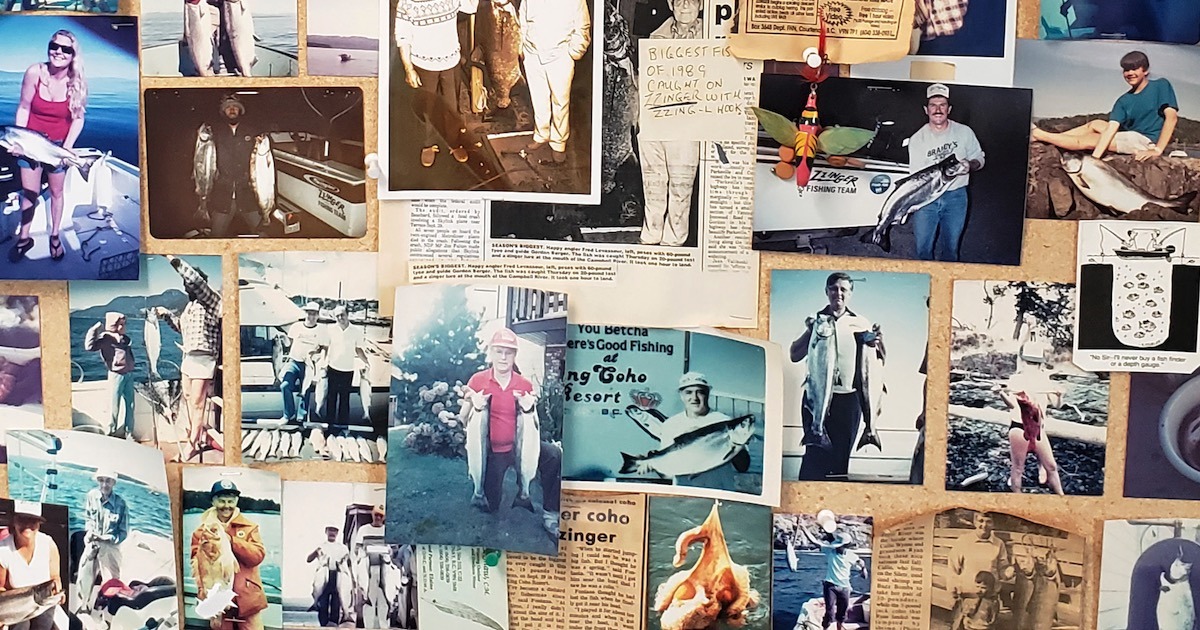
In the past, if you wanted a lure designed for your local conditions, you often had to make it yourself. There were a few imports, but most of them were not ideal for west coast fishing. Therefore, Vancouver Island became a hotbed for the development and manufacturing of new fishing lures. With today’s worldwide supply chains, this industry is fast disappearing, but many of these local lure designs are still used, and their history is worth remembering.
Growing up as a young fisherman, there was one fishing lure that I consistently used more than any other. I used to say that if I had to choose one lure to use for the rest of my life, I would choose a Buzz Bomb. These odd-shaped lures have caught me more species of fish in more far-flung locations than any other. I have used them in saltwater, freshwater, and even once while I was underwater snorkeling in Mexico.
Most west coast fishermen will be familiar with the Buzz Bomb, but they may not be as familiar with the iconic lure’s history. It was invented, and is still produced, in Courtenay, BC. It was the first rotating lure with the line going through the center of the lure to the hook. This allows it to rotate as it falls, just as a wounded baitfish does.
How the Buzz Bomb was Invented
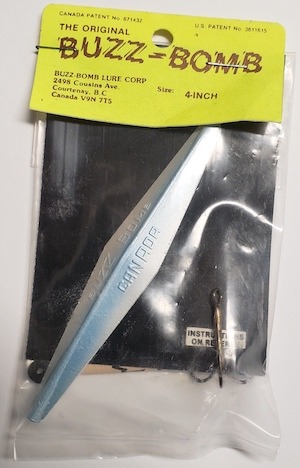
Buzz Bomb packaging
The Buzz Bomb was invented around 1960 by Rex Field. Rex had been making wooden salmon plugs since 1939, and later he was a pioneer of the use of plastic plugs. As the story goes, one day in the 1950s, Rex was fishing off the old Comox pier. He noticed that wounded baitfish would rotate as they drifted down and were quickly picked off by a salmon. He decided to design a fishing lure that would replicate this action. He went home and carved a wooden mold and melted some lead. Soon, he had cast a lure that he felt would mimic the spin of a wounded baitfish. The next day he began testing it. At first it fluttered instead of spinning. After a few modifications with his knife, he soon had a lure that spun like a baitfish. While testing the lure from the dock, he caught three Chinook in quick succession. At this point he must have realized he was on to something.
He continued to experiment on the lure and began to wonder if there might be more to this lure than just looking like a wounded fish. Watching it rotate through the water is said to have reminded him of a time as a child when he was playing at a building site. Apparently, he found some thin flat strips of wood, which he decided to throw like a spear. Since the strips were flat, they did not fly true but instead fluttered down making an audible buzzing noise. This led him to consider if the lure was making a similar noise or perhaps vibrations in the water.
Discovery of Vibration as a Fish Attractant
His next step was to hang a screen of black plastic in the water at the marina where there were plenty of juvenile salmon swimming around. He began to jig the lure beside the screen. Young salmon gathered around it. But they also began to gather on the other side of the screen, immediately opposite of the lure.
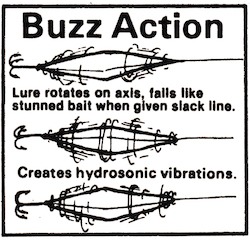
Buzz Bomb vibration
Clearly the salmon could not see through the black screen. But just as clearly, they knew the lure was there. This revelation made it clear to Rex that there was a sound or vibration coming from the lure and attracting the fish. There were a few more modifications, such as threading the line all the way through a hole down the center of the lure and adding rubber bumpers to protect the line. In the end, he had an innovative new lure that he decided to call the Buzz Bomb.
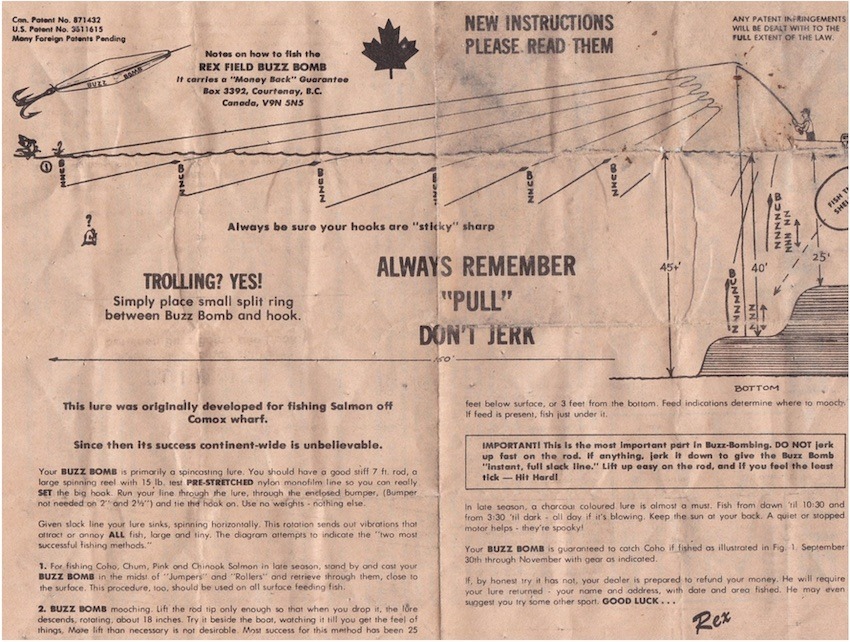
Buzz Bomb instructions

TV host Wes David “Fishing the Wild West”. Buzz Bomb Perch Holographic with a 15 lb lake trout.
It quickly began to gain popularity amongst Comox and Campbell River fishermen. It is even said that, at the time, there was some resistance from Campbell River guides to this new, easy-to-use lure. They felt it would take away from their business. While I cannot verify that story, the Buzz Bomb did, in fact, change how island fishermen fished. Previously, most salmon fishing was done with heavy trolling gear. Large barbed hooks were used on wire fishing line cranked in on strong stiff rods. The exception was mooching a herring in shallow water on lighter gear, often while tied or drifting near kelp beds.
With the advent of the Buzz Bomb, fishermen found a different style of salmon fishing. Instead of trolling around or sitting and waiting for a salmon to swim under the boat, the fishermen could actively target bait balls. That is, they could motor around until they identified a bait ball, and then drop a Buzz Bomb nearby and start jigging. Originally, this was done visually and later by utilizing fish finders. Today this technique is extremely popular among the fishermen in my area. The best fishermen I know spend the first part of their trip zooming around staring at their sounders until they spot bait. Today there are a wide range of lures that are used in this way. These include lures such as the Zzinger, Lil’ Nib, Delta Half Jig, and all of the imported flat fall jigs. All of these lures are designed to be used in the style of fishing that Rex helped to inspire.
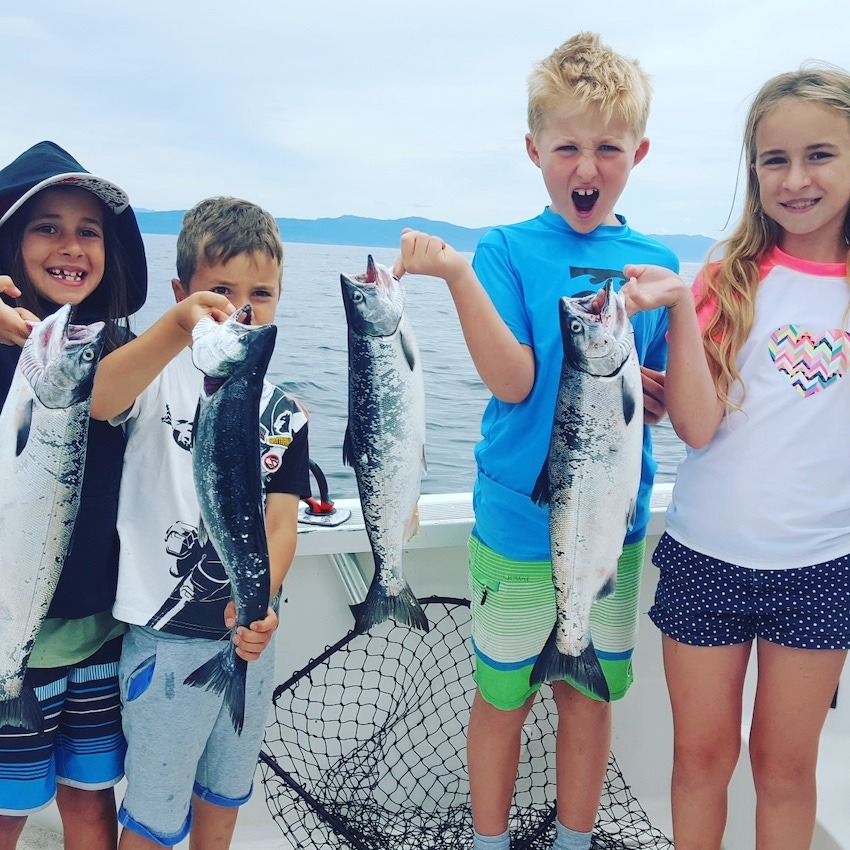
Catching Coho on Buzz Bomb is great for kids—Hornby Island 2017
Rex Field has been gone since 1985, but his legacy lives on. He left a lasting impression on fishing and lure design on Vancouver Island. His son Doug Field made Buzz Bomb into the renowned business it is today, and followed in the tradition of design with the Zzinger, Spinnow, and Zelda Jig.

Doug Field mid 90s
Buzz Bomb Today
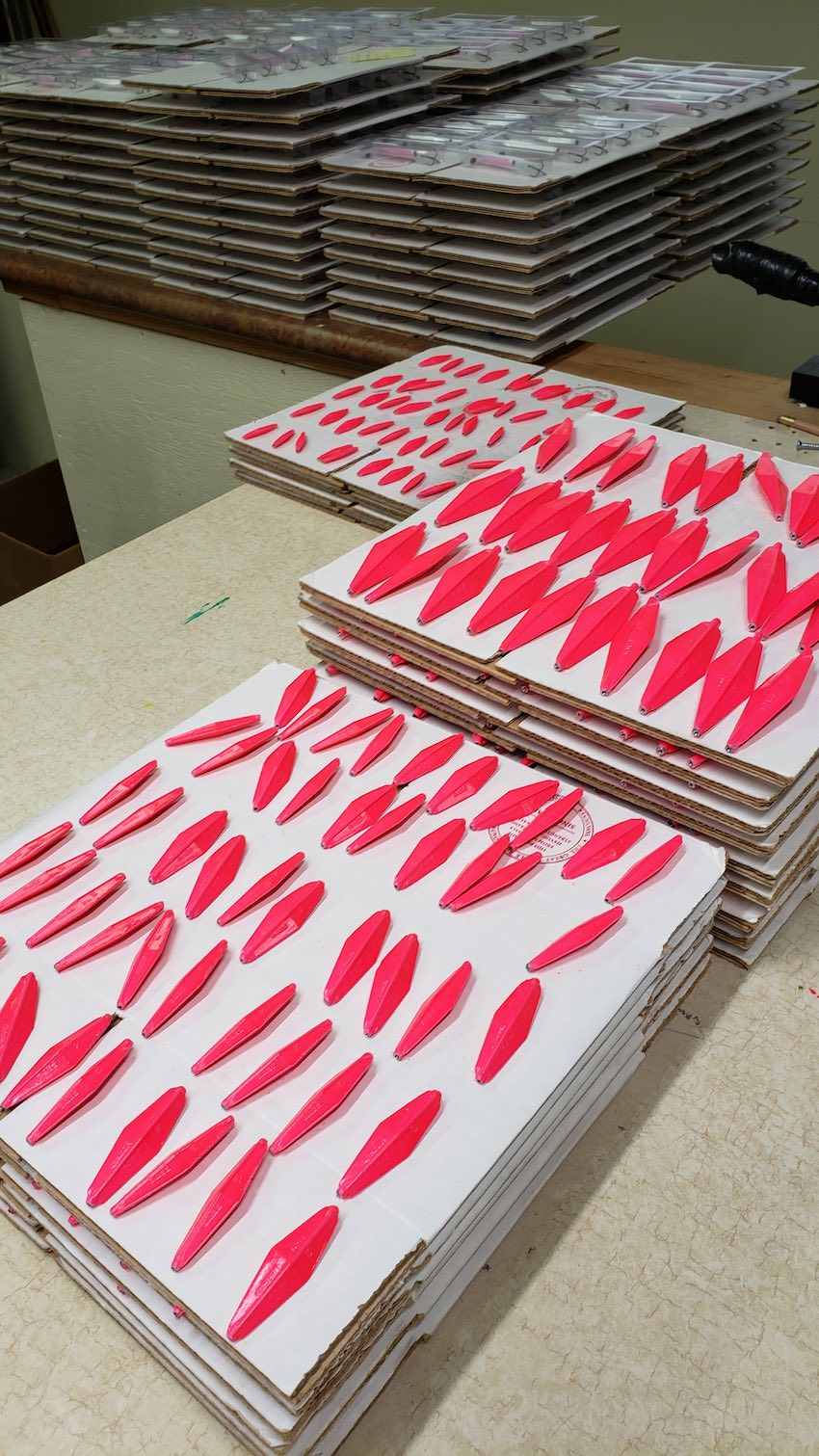
Buzz Bomb Pink
Unlike much of the gear we now use, the Buzz Bomb is still manufactured in Courtenay, BC by current owner Tim and Gaia Dolden. While there are many new vibrant colours available, the design of the lure remains unchanged. A classic is classic.
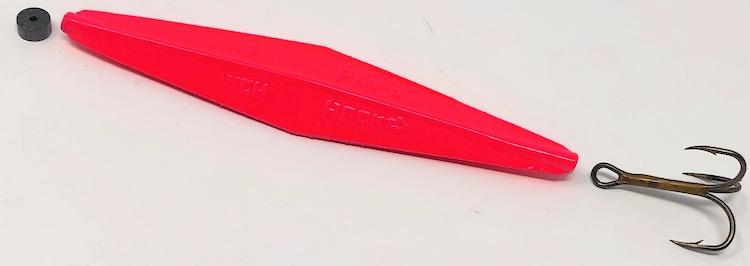
Buzz Bomb BB4 (Narrow Model) Hot Pink
It works, and it’s easy to use—so easy that many fishermen, including myself, landed their first salmon on it. As stated above, I grew up with a beat-up Buzz Bomb and an old fishing rod. I have many fond memories of my times spent using them. And even today, I always have a Buzz Bomb or two in my tackle box.
This article appeared in Island Fisherman magazine. Never miss another issue—subscribe today!
Visit the Store
$34.99
$34.99
Featured Catch

Joel Unickow halibut (Photo: Rob Frawley Lucky Strike Sportfishing Tofino)







